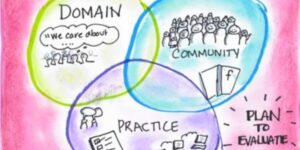
Future Of Work: An Army Of Open Leaders
What does a future-ready workforce look like? Business collaboration and learning expert Dan Pontefract says it features a special kind of leader

What does a future-ready workforce look like? Business collaboration and learning expert Dan Pontefract says it features a special kind of leader

Digital communities: Why are they a challenge for businesses to create and maintain? How can enterprise organizations up their community game?

Digital communities are increasingly important to business organizations. But what really makes an enterprise community effective?

When designing an organizational workspace, it’s essential to think from the “inside” out. Why? Thoughts from an employee recognition expert…

How can we prepare tomorrow’s workforce to meet employer expectations? There’s unlimited potential to make an impact. It can start with any one of us, on any day. Ideas for action…

Work is changing — and your work environment needs to keep up. If you’re looking to boost productivity or performance, take a look around you, and consider the possibilities…

What can the World of Work do to prepare today’s students for the road ahead? This week’s #TChat conversation is all about the importance of mentoring — and why it’s never too soon to start…

Today’s educational system falls far short of the mark in developing tomorrow’s leaders. What can talent-minded professionals do to bridge the gap? Social learning advocate, Angela Maiers, knows…

It’s official! TalentCulture is partnering with Achievers to expand and enhance the “world of work” mission. What does this mean for talent-minded professionals everywhere?

What role does age really play in today’s workplace? One of our very own #TChat Ambassadors takes a tough look, and offers advice for young professionals…

Today’s workplace is no place for age-based stereotyping. And yet, negative stereotypes persist. How can we break free from these assumptions that threaten professional relationships and business performance?
By definition, learning is a social function. How can business leverage this more fully to develop talent in the world of work? This week, we dug deep to explore the possibilities…
To succeed in today’s social business world, professionals must apply learning techniques to help focus on what matters most. It starts with a skill called “engagement-performance transformation.” Let’s break it down…
What does it mean to apply emerging social tools and techniques to the process of continuous learning? And why does it matter for individual professionals and the organizations we serve? Let’s talk about it!
What’s the recipe for more creative, satisfying solutions to challenges in life and in business? Try a dash of collaboration…
Collaboration – sounds good in theory, but hard to achieve in practice. Understanding human nature can help us tap into the best of collaborative techniques in the workplace. That was our goal this week…
We see examples of poor teamwork all around us. What’s at stake when business professionals fail to collaborate effectively? And how can we get on the right track? That’s the theme for #TChat this week…
Innovation isn’t magic. It’s the result of a culture designed to encourage fearless pursuit of fresh ideas – and the willingness to embrace failure as part of the process. It comes from conscious effort to gather input from a diverse and dedicated workforce…
Where does innovation begin? What characteristics of workplace culture allow viable ideas to emerge, take root and grow? That’s the focus at TalentCulture forums this week…
How can you stay ahead of the curve in today’s job environment? After a week of TalentCulture community discussion, I’m reminded that the key is not how fast or how elegantly your career moves forward – it’s how many others you bring along for the ride.
What will the world of work look like in the future? The TalentCulture community suggests that collaboration will be essential, as we move forward. That’s worth celebrating as we welcome 2013 in this era of networked communication that crosses organizational and geographical boundaries…
I never get tired of talking about social communities and their impact on brands and the recruiting process for the right talent. But what does it mean to “manage” communities – and what is the role of a “community manager” in today’s social business environment?
Businesses are calculating the risks and rewards of social media involvement as never before. But these days, when deciding how social media fits into the workplace, leaders would be wise to watch and listen for signals from employees. The noise is deafening…
We live the social business dream here at TalentCulture. But what do these breakthrough technologies really mean for global business performance? Is increased productivity, collaboration and access to better business insight making a measurable impact?
Long before the digital age arrived, with its unrelenting firehose of disruptive technologies, the terms “social”, “learning” and “business” made sense within the same sentence. Today’s workplace just exposes the relationship more than ever. But how can organizations make the most of new-school learning possibilities?